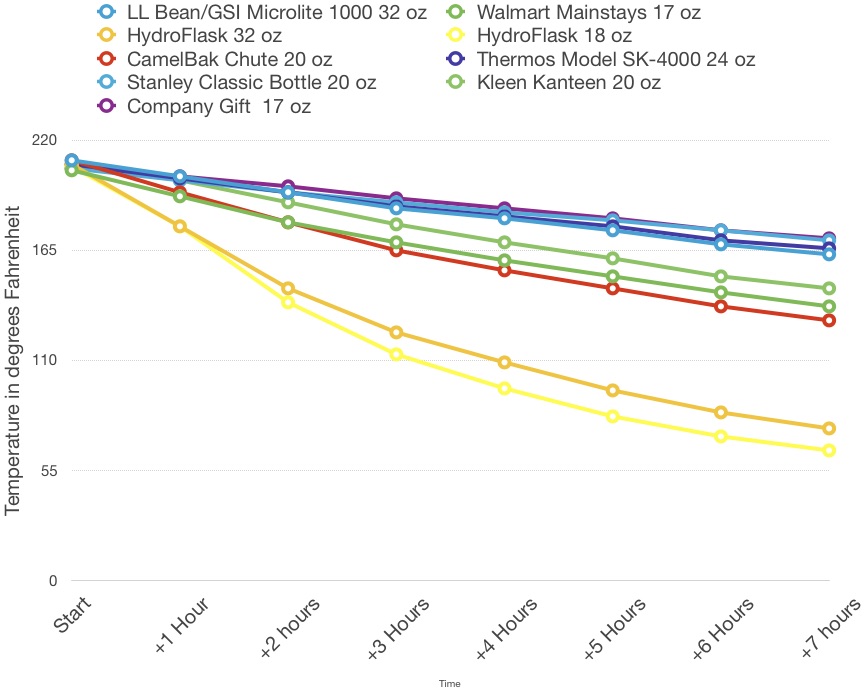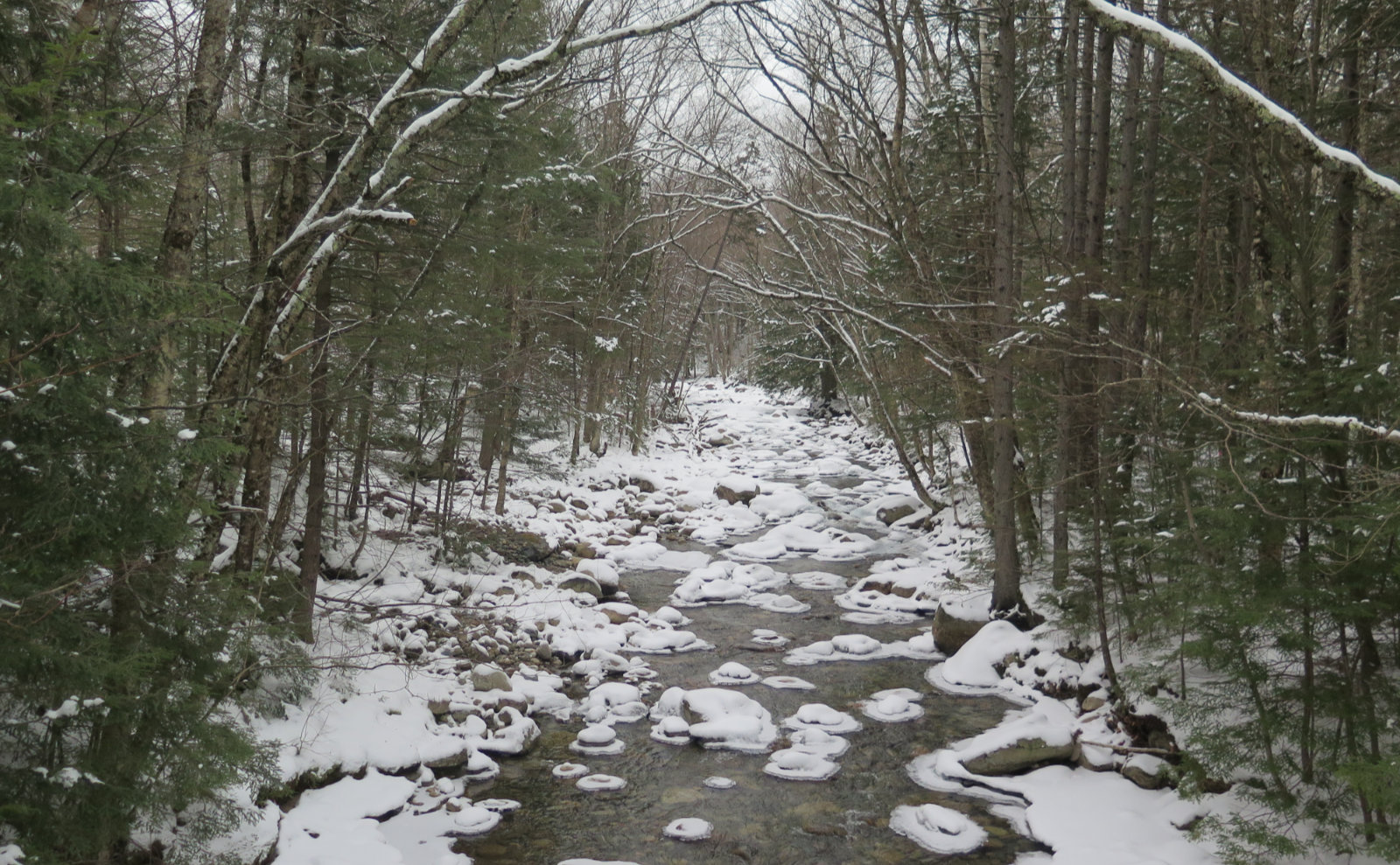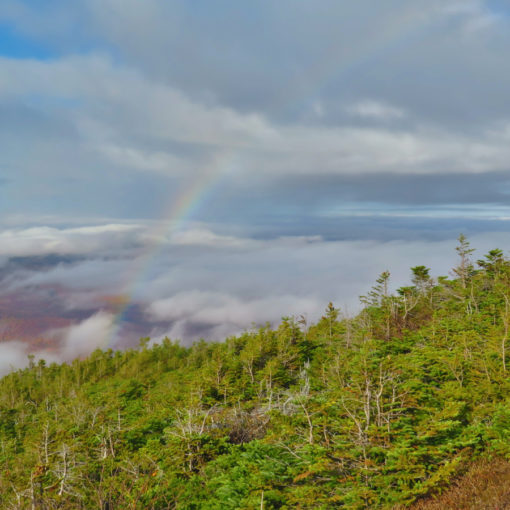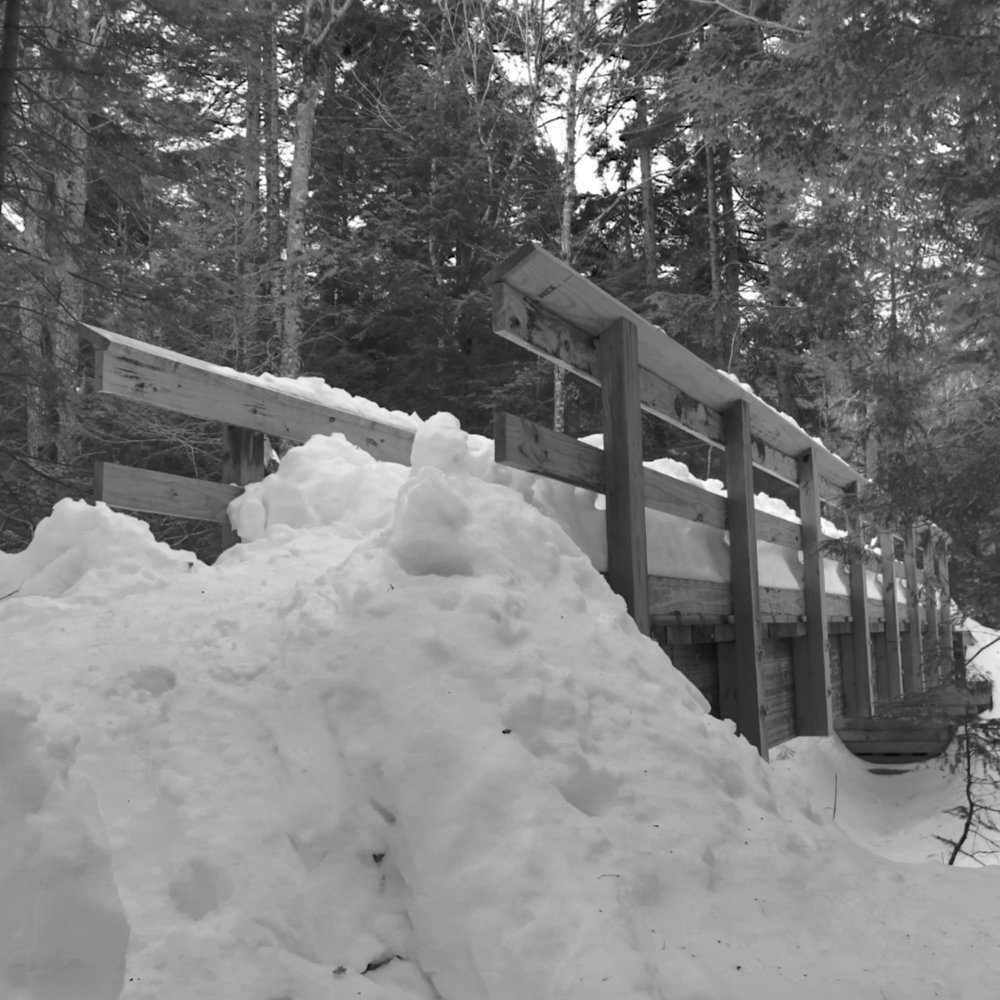Holding Hot Hydration While Hiking
Baby, it’s cold out there, but that’s no reason to try to drink solid ice. There’s a couple different strategies that I’ve suffered. I’d love to say it’s as easy as stuffing a CamelBak in your pack, and hitting the trail, but cold weather does tend to make things a bit harder. On the plus side, if you like a cool chug of your tasty beverage of choice, you don’t need to add ice.
Option one is to add salt. This isn’t going to solve most problems most of the time. Not the least of which, after a point, your body just can’t deal with all that salt water, and realistically, I don’t know many people who love drinking brine. Plus, you don’t need to be Captain Smith to know that even seawater freezes and becomes problematic. If the weather is cold enough, you could raise your water bottle expecting a drink, and yet find icebergs dead ahead. Drinking Gatorade can get you a couple of degrees below freezing, but in midwinter, the Whites get chillier than that.
For some time, I was skiing with a CamelBak. I’d take pains to blow air into my drinking tube after each sip, and to be sure to grab a sip fairly frequently. The theory was that if I was moving fluid enough, and clearing the tube each time, I could stay on top of it. It usually worked, but enough times found me trekking into the lodge to try and thaw things out. You might get away with this on a short afternoon hike, but it’s unreliable. A few ice crystals in the valve is enough to create a headache. Speaking to that, on my recent trip up Cannon, I brought my Platypus hydration bladder, and yep, everything iced up in short order. I’m done doing that.
A third option is to stash a bottle of warm water inside an insulating sleeve. It’s not hard to go to your favorite outfitter and find insulated zippered pouches, sized to fit a standard 1 quart Nalgene bottle. If you leave the house having filled it with hot tap water, I’ve found that works for around 2-3 hours or so before ice crystals start to form en masse. Some Gatorade mix (again, it’s slightly salty) can extend that a little. But for many, that means within about 4-6 miles of hiking, you’re going to see some freezing. With the exception of shorter hikes like Waumbek or Tecumseh, you’re not going to be doing a lot of 4,000 footers that way. For a lower peak, like Welch-Dickey, Kearsarge, or the like, it’s perfectly doable, and if those are your wintertime outings, I say run with it.
But for those eyeing a longer outing, a more robust solution is called for. It’s always a possibility to bring a stove and just melt some snow. However, recently, the peaks haven’t seen deep cover, so fetching clean snow, especially on the lower slopes, can take a little time. If a drainage is flowing with acceptable volume, you’ve got another source of water. Just don’t forget to cook off pathogens before drinking.
And then, there’s better living through technology. Vacuum flasks can keep your hydration nice and warm for an entire day. Thankfully, there’s a robust slate of offerings. I’ve gone out and tested several, trying to separate the wheat from the chaff. Unfortunately, marketing budgets are huge, so just by looking at the store shelves, it’s easy to be misled. That said, most offerings are very serviceable, and there are some unexpected inexpensive options, too, for those on a budget. Just because some brands can command premium prices doesn’t mean frugal hikers are left out in the cold.
How I tested:
I tested 9 bottles of varying sizes. For each, I boiled water, and poured it to the neck of each bottle, straight off the hob. Initial temps were between 205-210 degrees fahrenheit. I then screwed on the cap, and each bottle went into the fridge, which kept them around 37-40 degrees, representing a late-autumn day. At the top of the hour, I checked temps, then put the bottles back into the fridge. Lather, rinse, repeat. (Maybe like you, I didn’t have the space in my freezer to simulate a true midwinter hike, but the fridge was enough to model real-world use and produce reliable data.)
Testing apparatus was a Thermapen Mk 4, and the fridge temperature was monitored using a Thermoworks RT8100, with probes near the top and bottom. The fridge thermometer has an accuracy of +/- 1.8 degrees. The Thermapen Mk 4 has an accuracy of 0.7 degrees, and is NIST traceable. In other words, reasonably accurate, certainly to a freshman chemistry course level. If you haven’t learned by now, I tend to be a data and stats geek to some degree. It can be handy: people tell me my chocolate chip cookies are divine. You can’t reliably repeat what you can’t measure.
I tried to test things an average budget hiker could afford. I intentionally steered away from Yeti: their marketing budget is huge, as are their prices, and in looking at reviews of their products on other websites, there wasn’t enough difference to justify the huge markup in price. Indeed, one review I saw pitted their stainless steel vacuum travel mug against the Walmart house brand, and saw no significant difference in performance. (Do I need to point out the Walmart mug was about half the cost?) In short, if I could get it off the shelf at EMS, the local LL Bean outlet, Walmart, or the local hardware store, it made the list. Also, everything was stainless. I saw a few products that offered “no stick” coatings and the like. Given questions about food safety and plastics, I opted out of that stuff.
I was happily surprised to find a couple of very cheap options that outperformed. I was concerned that a brand leader turned out to be very disappointing. Household names continued to reassure. For the most part, nothing came in the same weight class as a plain-Jane Nalgene bottle. A vacuum bottle is generally made of stainless steel, and weighs accordingly. Some made an attempt to use thinner materials, and shave a couple ounces. Others bit the bullet, and embraced the weight premium in the name of durability. Drop a plastic bottle on a rock, and it scratches. Drop a metal bottle, and it dents. You decide how that tradeoff should play out.
Based on budget, I didn’t stick to a particular volume. I got some that were about 16-20 ounces/half a liter, all the way up to a full quart/liter. Then again, some may want a bigger bottle for the trail, keeping a smaller one in the car to warm up on the drive home. That said, I think it’s a safe bet that if a manufacturer can make one size well, they can repeat that trick across other sizes. That meant, however, that doing a straight-up weight comparison was out of the cards. We are, however, comparing stainless bottles, and by fiat, that means there’s a weight penalty built in. Expect to take on a few extra ounces per bottle. It’s winter hiking: a heavy pack is a fact of life.
Quick thoughts:
LL Bean cobranded with GSI for their Microlight 1000. It’s almost the same size as a Nalgene, being about half an inch taller, but otherwise the same diameter. It won’t fit a zipper pouch, but a drawstring sleeve should be OK. It came up with me on Galehead, and while I didn’t end up drinking from it on the trail, checking later showed it performed flawlessly.
Reassuring was the Stanley and Thermos brands. Your parents have at least one. They’ve been taken along on fishing and hunting trips for ages. They’re heavy as hell but at the same time, can take all that hell can dish out with nary a scratch. Both companies justifiably take pride in their reputations. Certainly not cheap, in price or quality. (But in terms of quality, for a little extra coin, you get a lot of durability, so taking the long view, they cost less.) Anecdotally, I’ve been using a Stanley travel mug for years, it’s done yeoman’s duty week after week, and I expect to replace it no sooner than about twenty years from now, if I need to at all. Running that one out, it’ll have cost me less than a dollar per year. If you’re so inclined, buy either according to your sense of aesthetics. Their temperature differences were on the order of a few degrees per hour. Hardly worth writing home about.
The CamelBak Chute lost heat quicker than most, but while it brought up the rear of the top performers, after six hours, it was still very comfortably warm. I could feel that heat loss through the cap, so perhaps stuffing it inside a fleece beanie might have cut that back. The spout, on the other hand, was crazy easy to use, even with gloves on, which in my book, accounts for quite a bit. After the formal testing, I tried this one out in the field the other day on Galehead, and it didn’t disappoint at all.
Walmart’s house-brand Mainstays surprised the heck out of me. It’s heat loss was only slightly better than the Chute, but I paid less than ten bucks for a 17 oz/500 ml bottle. Price for performance, this little guy punched way above its weight class. Similarly, I got an identically sized bottle as a company gift that performed as well as the Stanley and Thermos bottles. Branded as “S’well” it costs about $35, but looking around, you could probably find one for half that. Or if you’re lucky, your employer will just give you one. Keep your eyes peeled: great performance doesn’t have to come at great cost.
Kleen Kanteen was arguably an aesthetic winner, with a polished exterior and a bamboo cap. Happily, I can report it was a good option as well, although near the back of the top performers. My one gripe is that its rolled lip is a bit harder to drink from. But in all other respects, it did well.
Disappointment…
Overall, the single disappointment was HydroFlask. They were prominently displayed everywhere I looked: EMS, Dick’s Sporting Goods, etc. They’ve got inviting, splashy colors. And in testing, lost more than 50 degrees in the first two hours, and more than 15 in the third. By the fourth hour, they’d gone from nearly boiling to hardly tepid. I’ve used them on colder hikes, and been frustrated with a cold beverage before I got to the summit. Unscientifically, it seemed like all that loss was through the cap, and it didn’t seem to matter if it was the bigger or smaller bottle. I’d heard stories from colleagues about this brand, and this just underscored it. They come at a premium cost, but failed to deliver, especially when other options are out there for much, much cheaper prices.
Lastly…
I didn’t include it in the graph, however, I left the bottles in the fridge overnight, checking on them in the morning. The HydroFlasks bottomed out in the low 40s. Kleen Kanteen, Mainstays, and the Camelbak Chute were around 100. Everything else was around 130-140 degrees. Nice.
Looking at overall performance, I’d probably get the GSI Microlight 1000, for raw performance, and the Camelbak Chute for ease of use. I’d get a Stanley or Thermos for picnics in the park, or perhaps to go kayaking. If I were on a budget, the Mainstays really can’t be beat. And the Kleen Kanteen offered a very reassuring zen-like experience. The HydroFlasks contained water, and have bright colors. That’s the best I can say about them.
Graph, for the visually inclined.

As always, stay safe out there.




